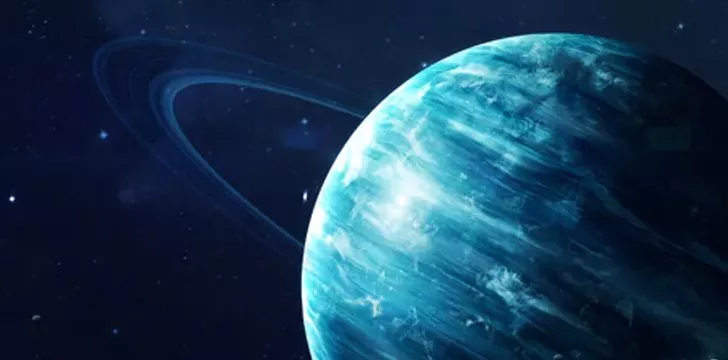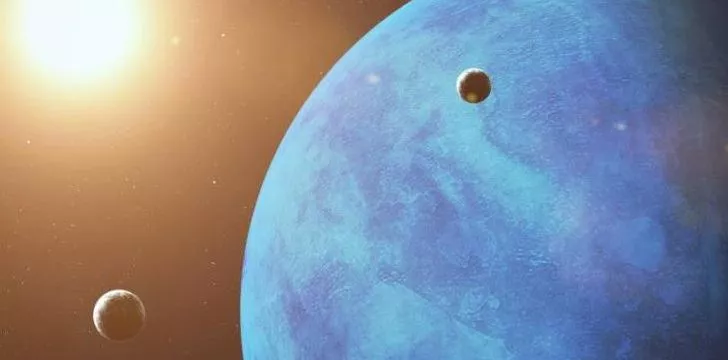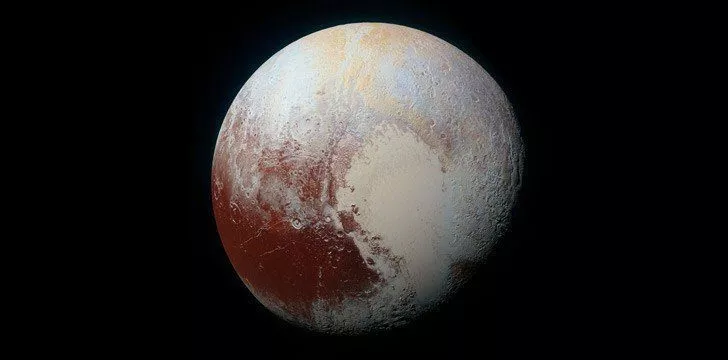The first 5 planets of our sensational solar system are very hard to date, being visible to the naked eye meant they were all identified long ago.
Of course, it does depend on their distance and whether you count actual up-close sightings, but the discovery date is unknown, what we do know though is their initial recorded date.
The planets have changed over time and each one is like an elder of the sky, watching over every star, organism, and speck of dust in the whole solar system.
Here we’re going to go through the date of each planet’s discovery, whether written or actual and some fun facts about each wonder.
Mercury

As I said earlier, due to its positioning and visibility to the naked eye, Mercury doesn’t have a definitive discovery date.
The Mul.Apin tablets hold the earliest known recorded observations of the planet and were likely made by an Assyrian astronomer.
The tablets themselves are thought to date back to 1000BCE or earlier, they contain the largest surviving record of Babylonian stars and constellations.
The cuneiform name (cuneiform being a type of writing used in Mesopotamia, Persia, and Ugarit) used on these tablets for Mercury is Udu.Idim.Gu4.Ud or “the jumping planet”.
Later on, the Romans called the planet Mercury after their messenger god as it moves across the sky faster than any other planet.
Mercury’s temperatures reach a rather sweltering 840°F (450°C).
It’s 18 times smaller than Earth with a diameter of 3,031 miles (4,878 km) and goes around the Sun every 88 days, one day on Mercury lasts just under 59 Earth days.
Mariner 10 was the first to visit Mercury flying by in 1974 and 1975, seeing less than half of the planet.
After that no more was seen for over 30 years. Then in 2008 NASA’s MESSENGER spacecraft flew by and in 2011 it began orbiting the planet sending photos back to Earth.
Venus

The first written observation of Venus is a record spanning 21 years of its appearance in the sky.
It was written on a Babylonian text from 1600 BC – one of the oldest surviving astronomical documents.
Galileo Galilei in 1610, the first person to observe Venus through a telescope, noticed the planet goes through Moon-like phases, this supported the Copernican view that the planets orbit the Sun and not the Earth as earlier thought.
The surface of Venus reaches 900°F (480°C), Venus has no known moons and is 20% smaller than the Earth.
One year on the planet equates to 225 Earth days.
The symbol of Venus is also that of the female, the ♀, alongside this, all but 3 of Venus’ surface features are named after famous women from around the world, the other 3 are Alpha Regio, Beta Regio, and Maxwell Montes.
Earth

Of course, Earth wasn’t discovered, apart from each individual’s discovery upon entry into this green and blue spinning glory.
The first photo of Earth from space was captured by a V-2 test rocket on October 24, 1946.
The spherical nature of Earth was previously the cause of many heated debates, the idea was mentioned in Greek philosophy in the 6th Century BC but until the 3rd Century BC, it was nothing more than speculation.
Hellenistic astronomy backed up the concept and up until the Middle Ages, the idea wriggled itself into people’s beliefs.
Ferdinand Magellan and Juan Sebastián Elcano’s round the world voyage between 1519 and 1522 was conclusive proof of the Earth’s spherical nature.
As we all probably know the Earth has 4 layers; the crust, mantle, outer core, and inner core, and is 70% water.
However, more interestingly, if Earth was the size of a nickel, the sun would be a front door.
Mars

The first recorded observations of Mars were from ancient Egyptian astronomers in the 2nd millennium BC.
In around 300 BC, Aristotle weighed in, noting that Mars is actually further away than the moon after noticing the moon passed in front of mars, proving of course it must be closer.
Galileo once again possibly had the first telescopic view of Mars between 1608 and 1610, but Francisco Fontana made the first actual records in 1636.
His sketches showed more the poor quality of telescopes of the day rather than any real depiction of Mars.
Christian Huygens probably made the first informative Mars sketch in 1659.
In 1965 22 photos of Mars, the first close-up photos of any other planet outside Earth were sent back by NASA’s Mariner 4.
Mars has a surface temperature averaging -81°F (-63°C) and is around 50% the size of Earth and has 38% of the Earth’s gravity.
Jupiter

Jupiter has been known as the wandering star or similar names for millennia. The first written records of Jupiter date back to the Babylonians in the 7/8th century BC.
By the 4th century BC, the Ancient Chinese had split the sky into 12 zodiac regions, with Jupiter or “the Year Star” passing through one region each year.
In 1610 Galileo discovered the planet’s 4 large moons known as the Galilean moons; Io, Europa, Ganymede, and Callisto.
Galileo noted the 4 moons’ motions around Jupiter, this was the first record of a center of motion not revolving around Earth.
The first visit to Jupiter was in 1973 by the space probe Pioneer 10 which took the earliest close-up photos of the planet, revealing the first real properties about the mysterious orb.
Jupiter, with an effective temperature of -234°F (-148°C), is the largest planet in our solar system, it has 50 moons and 3 rings.
The planet has a fascinating storm that has been raging across the surface for hundreds of years.
It also has drastically different gravity to that of Earth, if on Earth you weigh 100 lbs (45.4kg) you’d weigh 253 lbs (114.76kg) on Jupiter.
Saturn

Saturn is the last planet whose discovery date cannot be pinpointed but it seems that it was first recorded by the Assyrians.
They’re said to have written the oldest records of Saturn, or “the star of Ninib”, describing it as a sparkle in the night around 700 BC.
Later on, Ancient Greeks named an apparent wandering star Kronos, after the god of agriculture in 400BC which the Romans later renamed Saturnus.
When Galileo first monitored Saturn in the early 1600s, he didn’t think the planet had rings, but that it was an object with 3 parts or a triple planet.
Christiaan Huygens, over 40 years later, conceived that the 3 objects were actually rings as we know today, the rings themselves are made of rock and ice.
Saturn has 53 known moons and is 886 million miles (1.4 billion km) from the sun with an effective temperature of -288°F (-178°C).
One Saturn year is the equivalent of 29 Earth years. Pioneer 11 took the first close-up images of Saturn after passing just 20,000 km above Saturn’s clouds.
Uranus

Sir William Herschel discovered Uranus in 1781. Herschel was probably the most famous astronomer of the 18th century, being the first to identify the Milky Way’s spiral structure.
Australian scientists from Kuiper Airborne Observatory and the Perth Observatory in 1977 realized the planet has a band of rings similar to that of Saturn.
Quite the find seeing as they were actually just looking to watch Uranus passing in front of SAO 158687, a distant star.
Voyager 2 made the first fly-by in 1986 finding 10 new moons, a stronger magnetic field than Saturn, and 2 new rings after coming within 81,500km (50,600 miles) of the top of the planet’s clouds, Voyager 2 is still the only craft to ever make it to Uranus.
Uranus, the blue giant, is given its strangely blue tint due to the methane in its atmosphere and is often also called an ice giant as it’s made of a dense hot fluid of “icy” materials on top of a small rocky core.
It’s also the planet with the largest tilt of any in our solar system, spinning on its side and has an average temperature of -350°F (-212°C).
A day on Uranus lasts 17 Earth hours and a year on the planet equates to 84 years on Earth.
Neptune

John Couch Adams, an English astronomer, is credited with Neptune’s discovery in 1846. At 24-year old, Adams was the first person to predict the position of a planetary-mass past Uranus.
Adams was very close to not being recognized as the discoverer of Neptune after failing to publish his prediction.
Johann Gottfried Galle, a German astronomer, and Heinrich Louis d’Arrest using calculations by Urbain Jean Joseph Le Verrier, a French mathematician, confirmed Neptune’s existence.
Couch and Le Verrier can often both be cited as the “discoverers of Neptune”.
Neptune is rather noteworthy, it was the first planet to be found through mathematical predictions rather than telescopic location.
Neptune takes almost 165 Earth years to orbit the sun as its more than 30 times as far from the sun as the Earth is, which means the most recent complete orbit was completed in 2011, after the discovery in 1846.
Neptune is a windy place, its wind speeds can be 9 times stronger than that of Earth.
Pluto

Pluto, the is it/isn’t it planet, that has been at the center of many planetary debates.
On February 18, 1830, Clyde Tombaugh discovered Pluto after a careful sky survey at the Arizonan Lowell Observatory.
Many had theorized a planet must be out there to explain some weird happenings with Uranus and Neptune’s orbits.
This was the reason why Tombaugh was searching where he was.
The planet is named after, of course, the Roman god. The name was actually proposed by Venetia Burney, an 11-year-old schoolgirl from Oxford, England.
The first flyby occurred on July 14, 2015, where the first high-res photographs were taken of the planet during the New Horizons mission.
Pluto was officially struck off as a planet in 2006 and is now the second-largest dwarf planet in our solar system and the second closest to the sun.
Planet-X

Researchers from Caltech have found evidence deep in the solar system of a possible “Planet X”.
Director of NASA’s Planetary Science Division, Jim Green said:
“The possibility of a new planet is certainly an exciting one for… all of us. This is not, however, the… discovery of a new planet. It’s too early to say… there’s a so-called Planet X. What we’re seeing is an early prediction based on modelling from limited observations. It’s the start of a process that could lead to an exciting result.”
Planet X, or “Planet Nine” as it’s also been nicknamed, could be the size of Neptune and has an orbit far beyond that of Pluto’s, possibly between 10,000 to 20,000 Earth years.
This weird world could have around 10 times the mass of the Earth and its orbit reaches 20 times farther from the sun on average than Neptune.
So there we have it, our perception of the solar system has of course changed over time, whether it’s comprised of 8 or 9 planets just to be begin with.
Whatever number though, each planet has an incredible tale, and at some point, the visible planets at the very least, have been held very highly in cultures across the world and in mythology.
From the scorching temperatures of Venus to the storm ripping across the gas giant Jupiter, there really is something mind-blowing to learn about each planet and we haven’t even scratched the surface.












